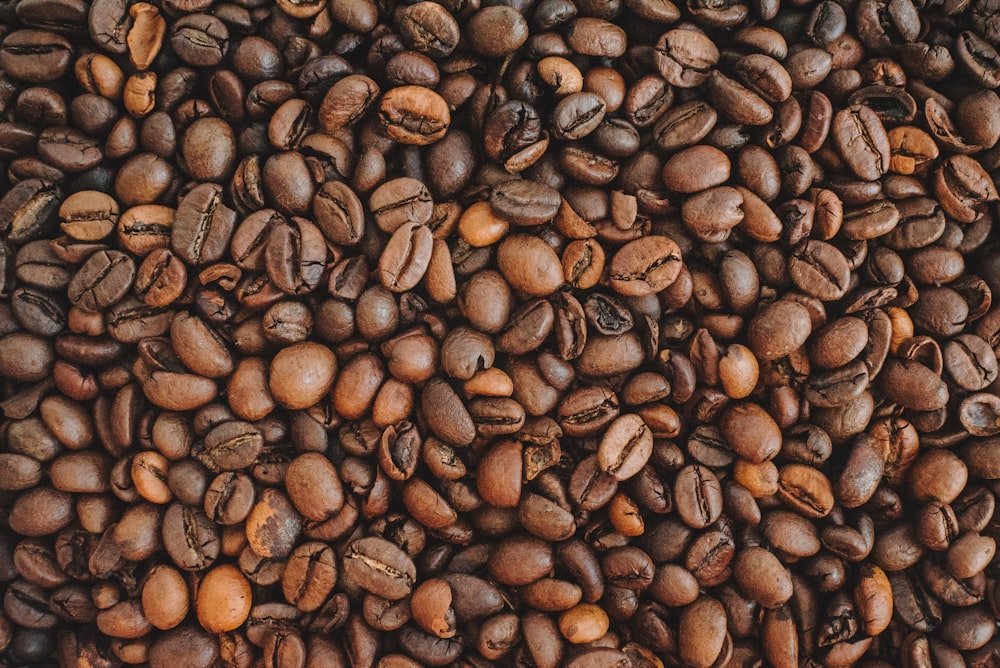Ever wondered where your beloved coffee beans came from? This essential part of your daily routine faces a wonderful journey from farm to cup!

As you get ready to savor your morning coffee, I’m certain you’ve wondered about coffee beans’ origins, like many enthusiasts. Let’s explore!
Coffee, adored worldwide, begins with the evergreen Coffea plant. Coffee farmers harvest its fruit, known as coffee cherries, which contain the seeds, or coffee beans, that brew our beloved drink.
Join me on a journey to uncover the origins of coffee beans. Learning about coffee’s roots will amaze and educate you, cultivating a greater appreciation for this beloved beverage.
Where Do Coffee Beans Come From?
The coffee beans found in your kitchen are the roasted seeds from the Coffea plant species within the Rubiaceae genus. These plants produce fruit, known as coffee cherries, which are harvested by farmers. The seeds are then extracted from the fruit to obtain green coffee beans.

Following harvesting and drying, these coffee beans undergo processing, milling, and roasting. After these steps, we obtain roasted coffee beans, which are used to brew coffee.
The majority of coffee consumed globally originates from two main types of coffee trees: Coffea robusta and Coffea arabica, yielding Arabica and Robusta beans with varying flavors.
Coffee cultivation began in Ethiopia’s Kaffa province before spreading to Yemen’s Mocha region and becoming popular worldwide.
Legend has it that in the 9th century CE, a goat herder named Kaldi from Ethiopia noticed his herd becoming lively after eating red berries from a shrub. He shared these berries with monks at a nearby monastery.
Despite the abbot dismissing the berries as “satanic” and tossing them into the fire, the aroma of the roasted coffee cherries attracted the monks. They found the burnt cherries, extracted the beans, and brewed what is believed to be the world’s first coffee.
And thus, coffee’s captivating journey started!
Coffee Growing Regions
Unfortunately, coffee doesn’t grow in every region worldwide. Coffee species thrive in areas known as the “Coffee Belt” or “Bean Belt,” situated along the equator between the Tropics of Cancer and Capricorn.
These tropical regions boast ideal conditions for coffee cultivation, including a favorable climate, fertile soils, and access to high-elevation farmland. As a result, countries within this belt produce some of the finest coffees globally.
Africa and the Middle East
Eastern and Western Africa primarily contribute to Africa’s coffee production. Ethiopia and Kenya lead in Arabica coffee, followed closely by Rwanda and Tanzania.
Notably, Senegal, Côte d’Ivoire, and Cameroon produce high-quality Robusta coffee beans.
Ethiopia, renowned for its Arabica coffee, produces about three percent of the world’s coffee. Grown in regions like Kaffa, Harar, and Sidamo, Ethiopian coffee offers three varieties: Longeberry, Mocha, and Shortberry, known for their superior quality, bold flavor, winy acidity, and floral notes.
Kenya ranks second in African coffee production, favoring Arabica over Robusta beans. The country’s coffee plantations, situated between 1,400 and 2,200 meters above sea level, produce delicate Arabica beans with a bold taste, vibrant aroma, and distinctive floral undertones.
South and Central America
Latin America dominates the global coffee markets, with South America accounting for a remarkable 70 percent of the world’s coffee production.
Central America’s Arabica coffee beans primarily hail from Costa Rica, Guatemala, Nicaragua, El Salvador, and Honduras. These beans are renowned for their well-balanced, mild, and delicate profile with moderate acidity. Their clean, vibrant taste makes them a favorite among coffee aficionados, prompting specialty coffee roasters and cafes to pay premium prices for these beans.
Leading South American coffee producers include Brazil, Colombia, Bolivia, and Ecuador. Brazil, a longstanding coffee powerhouse, has been the world’s foremost coffee producer for an impressive 150 years. South American coffees are characterized by their deep, earthy flavor and creamy chocolate aftertaste, making them the perfect indulgence for an afternoon pick-me-up.
Southeast Asia and the Asia Pacific Region
Indonesian coffee beans are renowned for their smooth texture, low acidity, and robust flavors of earthiness, sweet chocolate, and nuttiness, attributed to both their origin and the semi-washed processing method.
Indonesia boasts a variety of premium coffee types, including the controversial Kopi Luwak, with cultivation spanning regions such as Java, Sulawesi, Sumatra, Flores, Bali, and Papua New Guinea.
Vietnam, ranking as the world’s second-largest coffee exporter, is famed for its Lam Dong beans, which offer a medium-bodied texture and subtle notes of chocolate, caramel, and vanilla, along with low acidity and minimal bitterness.
Beyond Indonesia and Vietnam, Asia hosts other noteworthy coffee-producing countries like Thailand, Myanmar, Nepal, Laos, and China’s Yunnan province. Although their green coffee output may not rival Indonesia and Vietnam, these nations produce exceptional beans deserving of recognition.
Types of Coffee Plants
For avid coffee enthusiasts like myself, it’s fascinating to discover that there are over 120 recognized coffee plant varieties. However, among these, only four species – Coffee arabica, Coffea robusta, Coffea liberica, and Coffea excelsa – are widely acknowledged.
Coffee shrubs boast dark green, waxy leaves arranged in pairs along woody stems. These evergreen perennial shrubs, often referred to as coffee trees, can reach impressive heights of up to 20 feet (6 meters) in the wild. To facilitate harvesting of coffee cherries and enhance productivity, farmers typically prune coffee shrubs to approximately 5 feet (1.5 meters).
Arabica
Arabica plants produce the most sought-after coffee beans worldwide, thriving at higher altitudes above 800 meters, which poses a greater challenge for cultivation.
In contrast to Robusta cherries, unripe Arabica cherries boast a richer green hue and an oval shape. Arabica beans naturally contain less caffeine, offering a mild, full-bodied, and well-balanced flavor.
Additionally, Arabica beans command a higher price due to their superior quality and labor-intensive harvesting. They are prominently featured in premium espresso or drip coffee blends. Arabica beans contribute to 70 percent of global coffee production.
Robusta
Southeast Asia, Central Africa, and West Africa are the main regions known for producing Robusta coffee. This type of coffee flourishes at lower elevations and is less reliant on rainfall.
Robusta beans are characterized by their earthy and woody flavor profile, often accompanied by a slight bitterness or astringency. They also boast twice the caffeine content of Arabica coffee beans. Due to this intense flavor and caffeine content, pure Robusta coffee is seldom sold on its own. Instead, it is favored for inclusion in robust coffee blends or for the production of instant coffee.
How Do Coffee Beans Grow?
Coffee beans serve as the seeds of the coffee plant, sprouting into coffee plants when sown unroasted.
The initial step involves sowing the seeds in shaded beds. Once sprouted, farmers transfer these young seedlings into small pots with specific soil compositions. With proper care, the Arabica or Robusta plants grow rapidly. Once the roots establish themselves, the seedlings are permanently transplanted into the coffee estate.
Typically, coffee plants transform into flowering trees within a year and start yielding fruit, known as cherries, after three to four years. These cherries typically contain two coffee beans each. However, Peaberry coffee, renowned for its elevated acidity and a lighter, sweeter taste, occurs when cherries produce only one bean.
How Is Coffee Harvested?
Coffee harvesting involves various steps, typically carried out manually:
- Selective Harvesting: Skilled workers pick only ripe coffee cherries, leaving unripe ones for later harvests, ensuring top-quality beans.
- Strip Harvesting: Alternatively, all cherries are harvested at once, regardless of ripeness, for faster but potentially lower-quality results.
- Processing: Cherries are processed post-harvest to remove outer pulp and parchment layers, revealing the beans.
- Drying: Beans are dried in the sun or using mechanical dryers until they achieve the desired moisture level.
- Milling and Sorting: Dried beans are milled to remove parchment and sorted to eliminate defective or damaged beans.
- Exportation: Sorted beans are then exported to coffee roasters worldwide, where they’re roasted and brewed into the beloved beverage.
How Are Coffee Beans Processed?
Coffee bean processing encompasses various techniques, each affecting the ultimate flavor profile:
Wet (Washed) Process:
- Ripe cherries are then depulped to eliminate the outer skin.
- The beans undergo fermentation to degrade the mucilage.
- After washing the beans are dried onn the elevated beds or patios.
Dry (Natural) Process:
- Cherries are sun-dried, sometimes on raised beds or directly on the ground.
- Upon drying, the cherries are dehulled to remove the outer skin and parchment layer.
Semi-Washed (Pulped Natural) Process:
- Resembling the wet process, yet with a shorter fermentation period.
- Post-pulping, the beans undergo brief fermentation, followed by washing and drying.
Each method bestows unique flavors upon the beans, shaping the overall taste of the brewed coffee.
I trust this blog post has provided insight and enhanced your understanding of coffee bean origins.
Next time you sip coffee at home or indulge in your favorite Starbucks treat, take a moment to acknowledge the meticulous effort behind sourcing the finest beans from farms globally.






